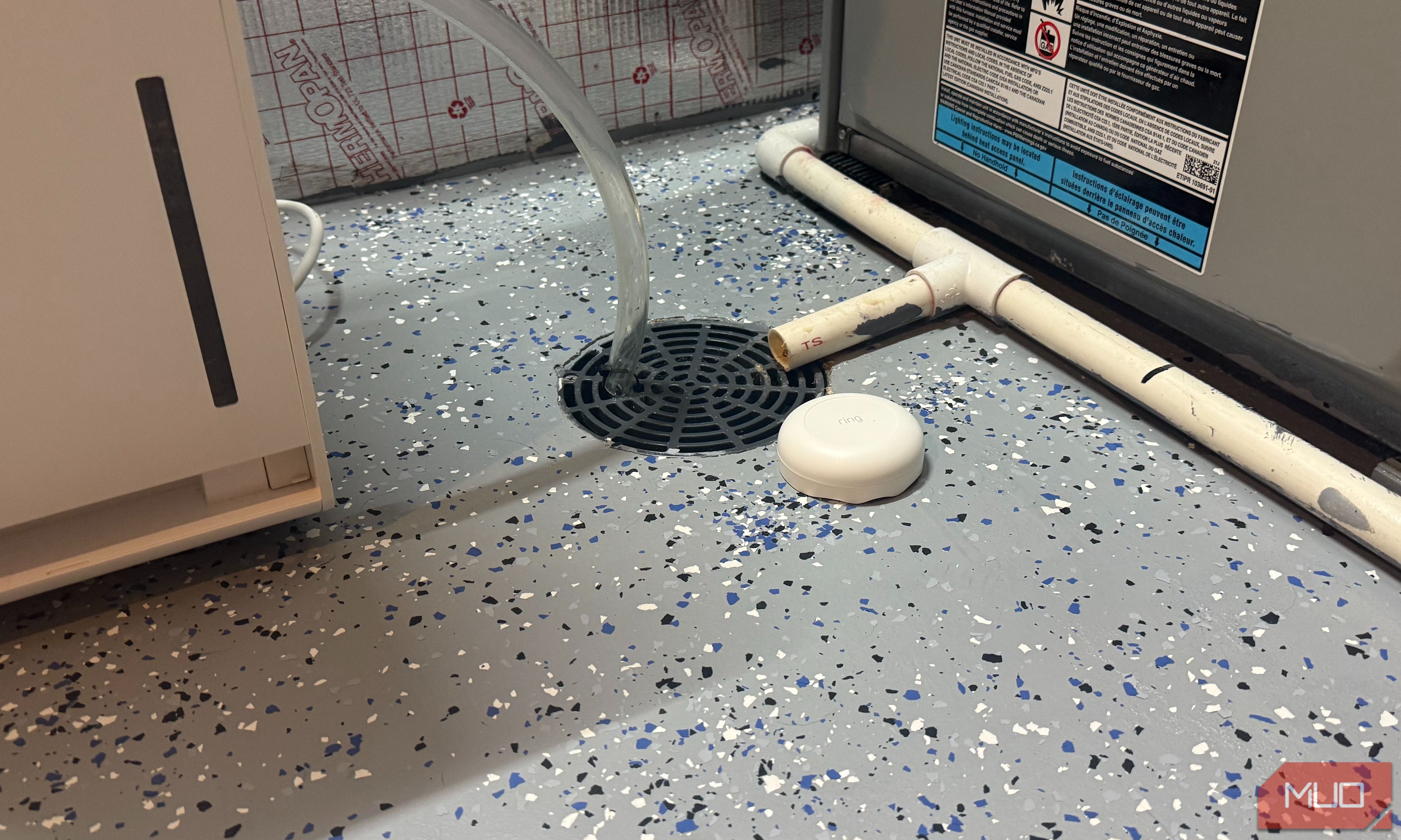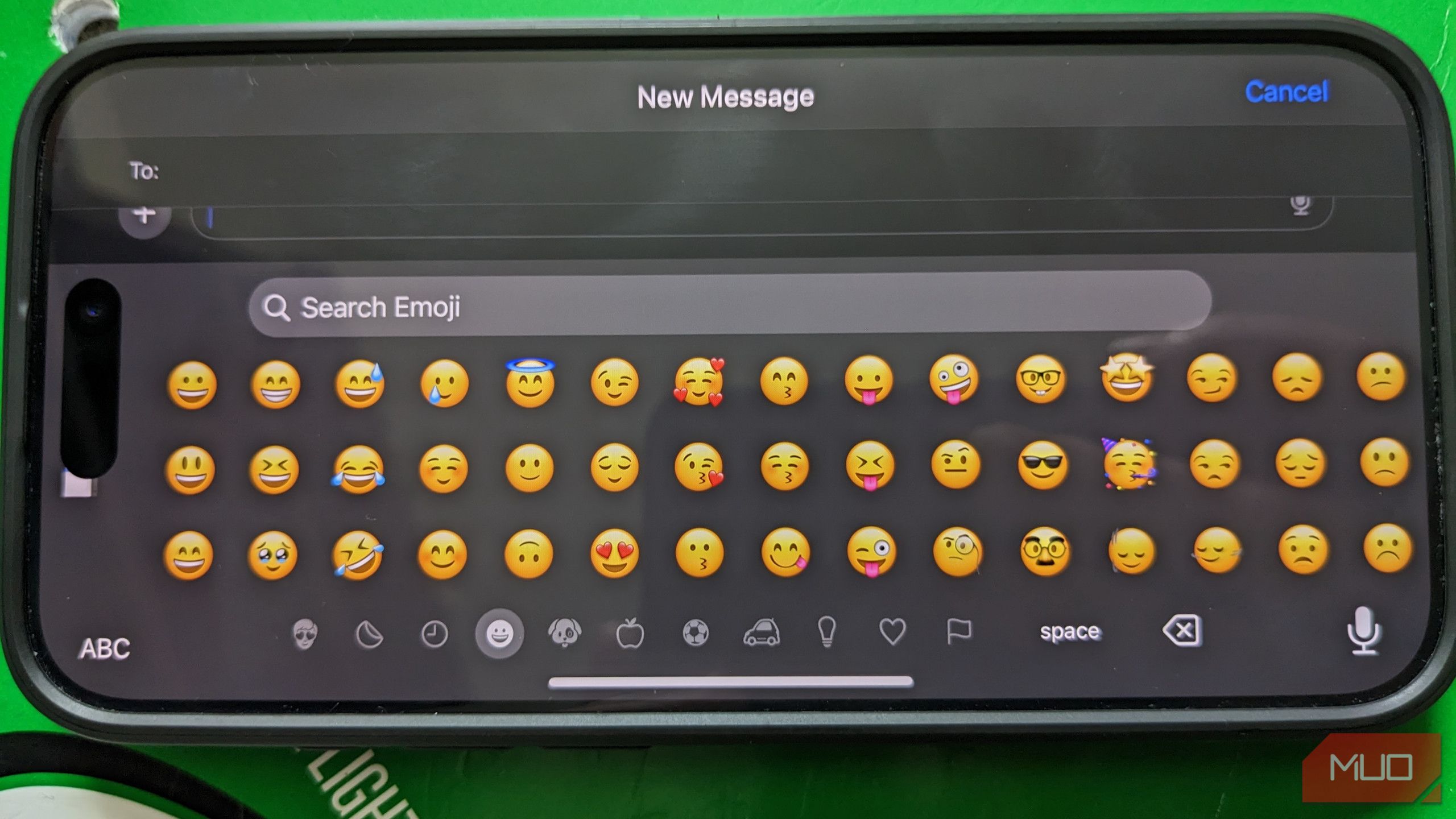Last month, my son discovered that toilet paper makes excellent flushable “snow”. He decided to test the theory by cramming an entire roll (including the cardboard tube) down the toilet, flushing repeatedly.
As water poured onto the bathroom floor, the $35 sensor tucked behind the toilet did its job—alerting me before the mess reached our hardwood floors and leaked into the basement below. I couldn’t believe my eyes when this smart leak detector saved me thousands in potential water damage.
The Day Everything Could Have Gone Wrong
My wake-up call came last spring when an outdoor hose bib failed and started leaking inside the basement wall. Around that same time, our sewage ejector pump for our basement bathroom started acting up. For less than the cost of a nice dinner out, I could get early warning systems for those most vulnerable areas.
While working from home, I was focused on a client call when my iPhone wouldn’t stop buzzing. Seeing “Water detected in Bathroom” from the Ring app made my heart sink. Burst pipe? Clogged drain? Roof leak? My mind went straight to disaster mode.
I bolted upstairs to find my preschooler beaming next to the toilet, which was dumping water all over the tile. It turns out that toilet paper makes great “experiments” when you’re curious about how plumbing works. The flood was creeping toward the door and baseboards, ready to leak under the walls, cover the hallway flooring, and soak into the subfloor.
That little white disc—a Ring Alarm Flood & Freeze Sensor—I’d stuck behind each toilet weeks ago, just earned its keep. The alert caught everything while the water was still on the bathroom tile—not after it had destroyed subflooring or leaked into the finished basement ceiling below.
My relief was instant, followed by respect for how well the system worked. Here was a ~$35 device that had just prevented what could easily have been a four-figure repair after just an hour or two of sitting.
The Ring Alarm Flood & Freeze Sensor: What Makes it Work
The Ring Alarm Flood & Freeze Sensor is a hockey puck-sized device designed to detect water leaks and temperature changes in your home. Its purpose is simple: catch water problems early before they turn into expensive disasters. When water touches the sensor’s metal contacts, it immediately sends alerts to your smartphone telling you exactly which sensor detected a leak.
Here’s the catch: you need a Ring Alarm Base Station for it to function. I already had one for our home security setup, but this could be a deal-breaker if you’re starting from scratch. The base station runs around $200, which changes the economics pretty fast. You can find the Ring Flood & Freeze Sensor on Amazon for around $35.
When you’ve got the Ring setup running, this thing works like a charm. The sensor can reach up to 250 feet to your base station and pushes notifications straight to your smartphone (on the Ring app). Its batteries should last about three years.
The temperature monitoring was more useful than I expected. Parts of our basement get cold in the winter, and the sensors alert me if the temperatures drop low enough to risk pipes freezing.
What I appreciate the most is how the alerts work. When water hits the sensor, it sends a notification to your phone that tells you exactly which sensor is detecting a water leak.
Where to Place Your Leak Detectors for Maximum Protection
You should install sensors where water naturally flows during leaks, rather than where it splashes daily. Place them behind toilets, next to/behind washing machines, below water heaters, under sinks, on sump pit lids—these spots make the most sense. Avoid areas where mopping or shower sprays might trigger reactions.
Setting Up the Ring Flood & Freeze Sensor: Step-by-Step
The setup process is refreshingly simple if you already have a Ring Alarm system running. First, remove the pull-tab to activate the sensor’s battery. Next, open the Ring app and select Devices, then the “+” symbol from the top right. Choose Security, click Sensors from the list, then choose Flood & Freeze Sensor.



Select Scan a QR Code, then use your phone’s camera to scan. Press the setup button on the circuit board when the app prompts you. Next, wait for pairing—it should connect within 30 seconds. Finally, name your sensor with a specific location, like “Kids Bathroom” or “Basement Sump Pump.”
Installation Tips
The placement is where you need to think strategically. I put mine directly behind the toilet, where water would naturally flow during an overflow. The sensor needs to sit flat on the floor with the metal contacts touching the surface.
Test the sensor before calling it done. The Ring app has a test mode that lets you verify the connection and alert system. You can also manually test it by placing a few drops of water on the metal contacts—just make sure you dry it off immediately. I also found that simply touching the metal contacts with your fingers is an easier way to test it.
Set your notification preferences next. I recommend enabling both push notifications and email alerts. You can also set up monitoring for multiple people, which is helpful if you travel and want your spouse to get alerts too.
The whole process took about 10 minutes, from unboxing to having a fully functional water detection system.
Alternative Options if You Don’t Have a Ring Base Station
If you don’t already have a Ring Alarm system, spending $200+ on a base station just for detection doesn’t make sense. Fortunately, several standalone sensors work without any hub or subscription fees.
YoLink Water Leak Sensor is my top alternative recommendation. It connects directly to your Wi-Fi network and sends alerts through its app. The setup is similar to Ring’s process, but without needing additional hardware. YoLink reaches way further wirelessly—up to ¼ mile—and works with Alexa and Google Assistant for voice alerts.
The Govee WiFi Water Sensor costs about the same as the Ring Flood and Freeze sensors and sends out a 100 dB alarm when water touches it.
Is Smart Leak Detection Worth It?
My toilet overflowing could have easily cost me $2,000+ in flooring and basement ceiling repairs had I not been alerted right away. Instead, it cost me 20 minutes of cleanup time and a few wet towels. The sensor paid for itself in my first month of use.
Water damage can sneak up on you. Most home floods start small but can cost a lot when no one is watching. Early detection flips the script—you catch the problems while cleanup is still simple.
Got a Ring alarm system already? Adding its flood sensors is obvious. Don’t have Ring? Standalone Wi-Fi sensors deliver the same peace of mind without buying into the whole system. If you’re worried about water damage, these sensors earn their keep.












